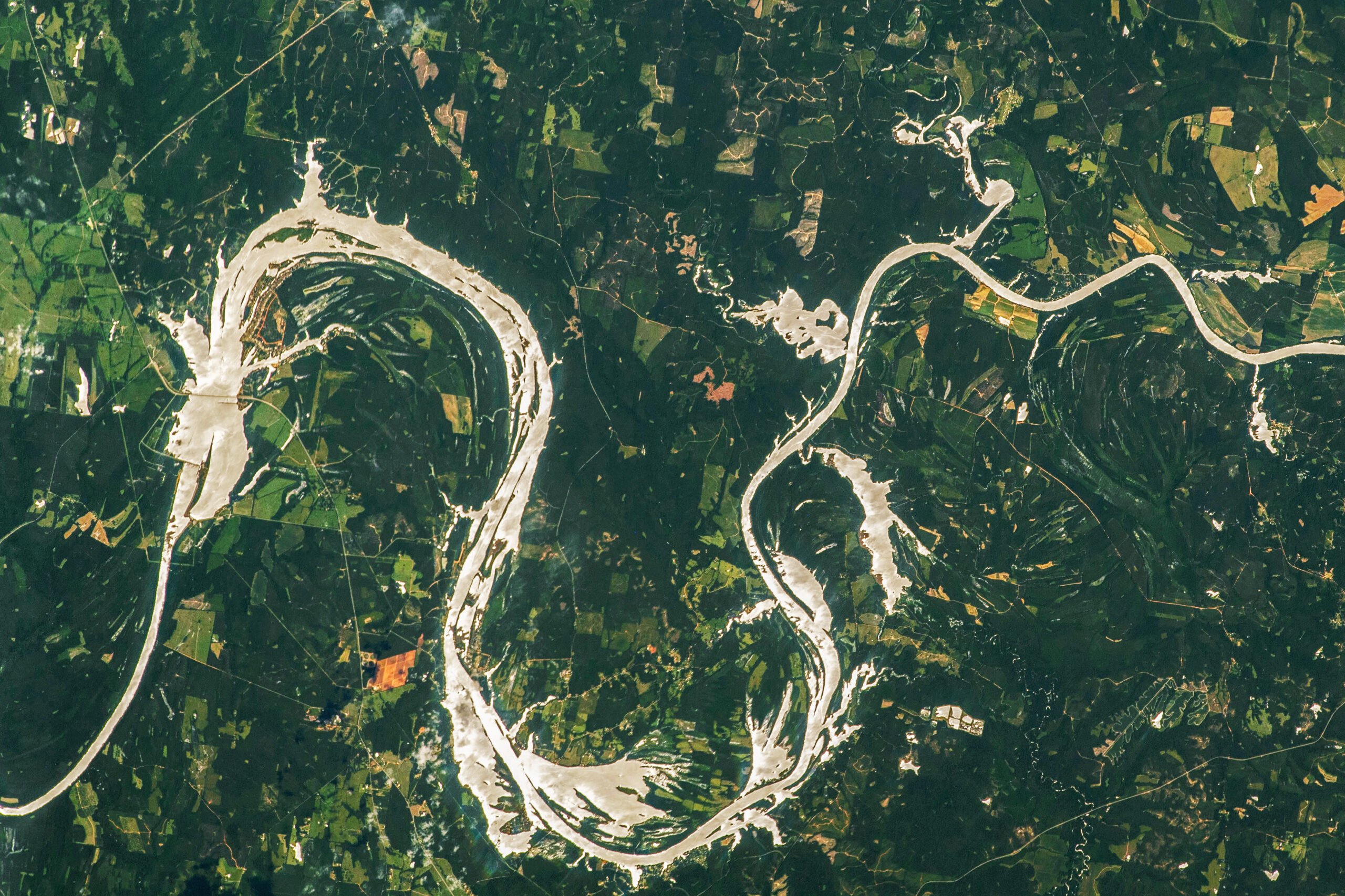The Phenomenon of Sunglint Captured from the International Space Station
In a captivating image taken from the International Space Station (ISS) on June 26, 2023, a stunning natural occurrence known as "sunglint" is vividly captured. This intriguing phenomenon occurs when sunlight reflects off the surface of water bodies, creating a mirror-like effect that enhances the contrast between water and the land surrounding it. This particular photograph highlights the Alabama River, where the sunglint effect is prominently visible.
Sunglint is a fascinating optical occurrence that astronauts often utilize in their photography when capturing Earth’s diverse landscapes. The reflection of sunlight off water bodies increases the visibility and contrast, making features such as rivers, lakes, and seas more distinguishable from the land. This increased contrast is not just aesthetically pleasing but also scientifically valuable, as it enables researchers to study various geographical and environmental features with greater clarity.
The Transformation of the Alabama River
The Alabama River, a significant waterway in the southeastern United States, underwent a transformation in the 1960s when it was dammed, leading to the creation of the Dannelly Reservoir. This man-made reservoir can be seen in the image as a large, gleaming area towards the center left. The construction of the dam was a critical infrastructural development aimed at improving water management, providing flood control, and supporting various human activities such as agriculture and recreation.
However, the creation of the reservoir also led to changes in the river’s natural landscape. The damming process raised water levels upstream, which resulted in flooding at various points along the river. These flooded areas are characteristic of floodplains—low-lying, flat areas adjacent to larger rivers that are prone to flooding. In the photograph, these flooded zones appear as bright, irregular shapes extending outward from the river, particularly evident near locations like Gee’s Bend, seen at the center bottom of the image.
Understanding Sunglint and Its Scientific Importance
Sunglint is not just a visual spectacle; it holds significant scientific importance. By enhancing the reflectivity of water surfaces, sunglint provides vital data for scientists studying hydrology, oceanography, and climate science. The phenomenon allows for better observation of water currents, surface roughness, and even the presence of pollutants or biological materials in the water.
When sunlight strikes the water at a particular angle, the reflected light travels directly to the observer’s eye or camera lens, creating the bright, shimmering effect characteristic of sunglint. This effect is particularly useful in satellite and aerial imagery, where it helps delineate water bodies, assess their health, and monitor changes over time.
The Impact of Damming on River Ecosystems
The damming of rivers, such as the Alabama River, has both positive and negative impacts. On the positive side, dams provide essential benefits, including water supply for irrigation, hydroelectric power generation, and flood control. They often facilitate economic development and improve living standards by providing recreational opportunities and supporting local industries.
However, the environmental consequences of damming are significant. Altering a river’s natural flow can lead to habitat destruction for aquatic and terrestrial species. The flooding of areas upstream disrupts ecosystems, displaces wildlife, and affects water quality. The creation of reservoirs can also lead to the loss of culturally and historically important sites, as land is submerged.
In the case of the Alabama River, the formation of the Dannelly Reservoir has provided recreational opportunities and supported economic activities, but it has also altered the natural landscape and ecosystems. The flooded areas, while creating new habitats, have changed the dynamics of the local environment.
Broader Implications and Considerations
The image captured from the ISS not only serves as a beautiful representation of Earth’s natural phenomena but also prompts reflection on the broader implications of human intervention in natural landscapes. It highlights the delicate balance between utilizing natural resources for human benefit and preserving the environment for future generations.
Sunglint, as observed in this image, offers a unique perspective on how technology and natural science can converge to provide insights into our planet’s dynamics. As scientists and environmentalists continue to study such phenomena, the knowledge gained can inform policy decisions and promote sustainable practices that consider both human needs and ecological preservation.
In conclusion, the photograph of the Alabama River from the International Space Station is more than just a visually striking image. It is a testament to the intricate interplay between natural phenomena like sunglint and human activities such as dam construction. It serves as a reminder of the ongoing need to find sustainable solutions that balance development with environmental stewardship.
For further reading and to see the original image, you can visit NASA’s Earth Observatory website.
For more Information, Refer to this article.


































